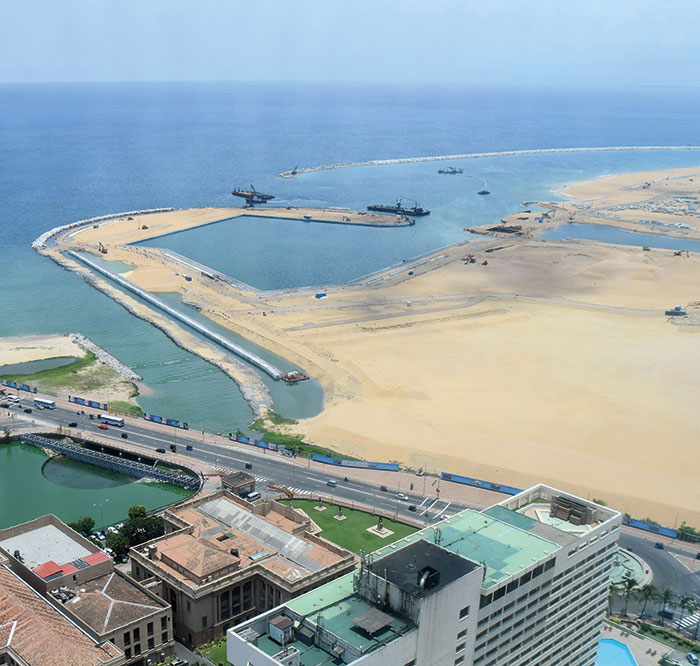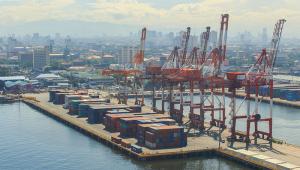‘Sri Lanka wants to undo deal to lease port to China for 99 years’. The Bloomberg news headline about the situation at Sri Lanka’s main port, published in November, tells a compelling story. Once hailed by Sri Lanka’s leaders as a breakthrough, this transaction is now troubling the national government.
Can Sri Lanka find a better and smarter way to develop her infrastructure – such as key ports – as these assets become more critical to the country’s future economic success? The answer is somewhat dependent on a new and ambitious World Bank project. With an initial investment of US$25m, it aims to develop a better way for Sri Lanka, with Sri Lanka’s national government as the primary partner.
Why is this situation so critical to Sri Lanka’s success? This is a lower-middle-income country, which, following the end of a 30-year civil war in 2009, saw its economy grow at an average of 6.2% between 2010 and 2016. Sri Lanka was enjoying the benefits of a peace dividend and policy thrust towards reconstruction and growth. By 2016, per capita gross domestic product stood at US$3,835 – representing GDP growth of 4.4%, which is expected to reach 4.7%. Compared with other developing economies, it ranks relatively highly (73) on the UN’s Human Development Index, and 110 on the World Bank’s Doing Business indicator (up from 113 in 2015).
Over the past few years, Sri Lanka has been grappling with large fiscal deficits and issues with managing public debt. In 2015, it recorded a fiscal deficit of 7.6% of GDP, with public debt levels of 77.6% of GDP. Corrective measures adopted following an International Monetary Fund programme reduced the fiscal deficit to 5.4% of GDP in 2016. But high public debt levels have been exacerbated by weak foreign direct investment flows over the past few years, leading the government to rely on domestic and foreign loans. Sri Lanka still has a long way to go to meet its commitment to lower the fiscal deficit to 3.5% of GDP by the end of 2020.
“With public debt levels close to 80% of GDP, continuing to rely on public debt financing to provide infrastructure is unlikely to be a sustainable approach”
Constrained by this economic situation, Sri Lanka’s actual spending on infrastructure (both economic and social) as a percentage of GDP was only 4.6% in 2016. This compares unfavourably with other countries in the region, emphasising the need for Sri Lanka to strengthen competitiveness by ramping up infrastructure investment.
While infrastructure has been a key driver of economic growth in recent years, it is still lacking. With increased urbanisation in the Colombo metropolitan region, connectivity and congestion have become severe constraints on productivity. And the country still has much to do in addressing economic and social infrastructure needs beyond this region.
Infrastructure financing in Sri Lanka has so far been dominated by public funding, often supported by loans from international financial institutions and countries such as China and Japan, which have typically lent to the government’s state-owned enterprises. In addition, some of the infrastructure projects were also financed by the state-owned enterprises borrowing locally with the support of a sovereign guarantee. Private sector infrastructure financing is often sought only where a project is unable to secure public funding.
web_colombosrilanka_istock_000050638560_large.jpg

Colombo, Sri Lanka
With public debt levels close to 80% of GDP, continuing to rely on public debt financing to provide infrastructure is unlikely to be a sustainable approachWith public debt levels close to 80% of GDP, continuing to rely on public debt financing to provide infrastructure is unlikely to be a sustainable approach. Public-private partnerships, although complex and time-consuming, can provide value for money for suitable projects that are well prepared and structured. However, it’s important for the government to realise that PPPs cannot be an appropriate solution for all its infrastructure needs – and that they bring contingent liabilities that need to be quantified and managed.
There are a number of constraints faced by the government in executing a successful PPP programme. Diagnostics carried out by the World Bank indicated several issues that need to be addressed to pave the way, but Sri Lanka has the potential to benefit immensely from a PPP programme, given its past successes.
Between 1995 and 2005, private participation in infrastructure totalled US$2.1bn across the transport, telecoms and energy sectors. Several projects procured over a decade ago have already been successfully implemented without any renegotiation. At the forefront of this was a central, dedicated PPP unit, established under the Board of Investment of Sri Lanka and tasked with the identification, structuring, evaluation and negotiation of PPP projects. Despite its success, this unit was wound down, post-2005, by a government that increasingly favoured the use of public finance, particularly with the assistance of bilateral development partners.
“Sri Lanka has the potential to benefit immensely from a PPP programme, given its past success”
Given the combination of fiscal constraints and the need to invest in infrastructure, the current government is keen to relaunch the PPP programme and approached the World Bank for assistance. Now it has been established, the World Bank is focused on introducing capital market reforms, strengthening the investment climate and related legal frameworks, supporting investment promotion, improving Sri Lanka’s Doing Business indicator score, establishing a debt management unit, and managing climate risk and public finance. In addition, transaction advisory services are being provided by the International Finance Corporation.
The core objective is to improve the institutional, policy and legal frameworks conducive to financing PPP projects, under the following elements.
- PPP diagnostic and operational support: In May 2016, the World Bank assessed the constraints in the enabling environment for PPPs in Sri Lanka and put forward recommendations that led to the establishment of a central PPP unit in January 2017, overseen by a board of governors.
- Supporting prioritisation and procurement: The World Bank has taken steps to address some of Sri Lanka’s weaknesses in investment prioritisation by creating extra capacity within the national planning department. In addition, with financing from the US Agency for International Development, the World Bank team has been involved in shaping new procurement guidelines.
- Transaction support: The International Finance Corporation has been mandated to provide transaction advisory support for a number of recent and upcoming transactions.
- Public-private infrastructure advisory facility grant: In response to the request for assistance in developing a suitable framework and enabling environment for PPPs, a grant of US$700,000 was approved.
The government’s economic policy framework, Vision 2025, puts PPPs centre stage, identifying the importance of empowering the private sector and reducing reliance on public sector borrowing to provide public assets and services. Moreover, it wants to expand PPPs beyond the current sectors of transport and energy into new domains: healthcare, leisure, tourism and education. Whatever the sector, PPPs are key to strengthening Sri Lanka’s growth.
Paving the way for PPP success
To execute a viable programme of public-private partnerships, the Sri Lankan government must address a number of issues. These include:
- Over-reliance on unsolicited proposals: In recent years, many public sector projects have been procured on an unsolicited basis, with adverse implications for transparency and value for money. This is exacerbated by the absence of a guiding policy framework for PPPs, together with a distinct lack of understanding based on limited institutional capacity to identify, assess and prepare bankable PPPs.
- Multiple agencies with overlapping functions: The absence of a cohesive framework to govern institutional mandates, responsibilities and inter-agency decisionmaking has created an environment of uncertainty and confusion for investors.
- Poorly prepared projects that adversely affect procurement: More recent attempts at developing key infrastructure projects on a PPP basis brought mixed reactions from private developers, with different government agencies attempting to lead the way amid political uncertainties. Several projects for ports, highways and energy, have failed because of inadequate or non-existent feasibility studies, resulting in poorly structured transactions. The market has also seen political interference created by the absence of a clear procurement process. .
- Limited long-term debt and liquidity: There is lack of long-term debt in the domestic banking market for infrastructure loans that typically require longer repayment periods. In addition, the banking system does not have enough liquidity to support the infrastructure investment required, particularly for large, individual projects. Capital markets are also significantly underdeveloped and ill-equipped. Sri Lanka must deepen and broaden its capital markets, encourage local banks to increase their infrastructure financing, and attract offshore banks (at least in the short term). To do this, it will need to establish appropriate legal and regulatory environments, and a pipeline of well structured projects.
- A legal framework that is not conducive for private sector investment: Although Sri Lankan investment law is not explicitly restrictive of foreign investment, obstacles include lack of clarity, scope and information, and excessive discretion permitted by the legal framework. There is no comprehensive investment law.
- Insufficient institutional capacity for PPPs: There is currently very little understanding within the public sector of PPPs, and little, if any, capacity to prioritise, structure, procure and manage these projects. In addition to this, the PPP-enabling environment is very weak, and there is no clear policy.
- Limited ability to manage contingent liabilities: Although much public-sector borrowing is guaranteed by the government, its capacity to manage contingent liabilities is very limited. This is critical, because most PPPs will have some form of associated contingent liability.














